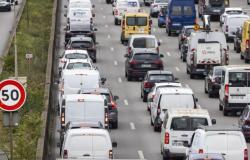The 29th edition of the Conference of the Parties (COP) takes place from November 11 to 22, 2024 in Baku, Azerbaijan. Since 1994, the COP has been the largest and most important climate conference. The 197 member states (or “parties”) of the United Nations Framework Convention (UNFCCC) represent almost all of the countries in the world. Decryption.
“It is in the interest of each country to act against the climate crisis,” explains energy expert Said Guemra. Today, the bitter observation is that climate damage and extreme weather phenomena are accelerating and intensifying throughout the world, and no country is spared. Record flooding in Spain, severe storms in Florida and North Carolina, and wildfires in South America are devastating lives and livelihoods. In Morocco, for several years, the horrors of water stress have weighed on the agricultural world.
Read also | Signature of a Memorandum of Understanding between CDG and Gotion High-Tech for a battery Gigafactory in Morocco
It is therefore in this context of exacerbated crisis that the new edition of the COP intervenes. For 2024-25, COP29 priorities include establishing a new financing target for climate action and supporting countries to strengthen their climate efforts. This year, climate finance represents a central theme. Countries should agree on a new Quantified Collective Financing Target (NCQG), which will succeed the developed country climate finance target of $100 billion per year, set in 2009 at Copenhagen.
The previous COPs, what results?
At COP21 in Paris in 2015, states agreed to try to limit global warming this century to 1.5°C above pre-industrial levels in order to ward off the worst effects of change. climatic. We are already at around 1.4°C, and the global climate is set to rise to 2.8°C by 2100, according to the IPCC, the climate science advisory committee, with consequences catastrophic for billions of people and ecosystems. Concentrations of greenhouse gases, including carbon dioxide and methane, which warm the atmosphere and mainly come from the production and combustion of fossil fuels, are already at record levels and continue to rise. Note that at the last COP in Dubai, the challenge was to push countries whose economies rely on hydrocarbons to engage in all-out decarbonization of their economies.
How to finance the ecological transition?
Many countries do not have sufficient resources to repair the damage caused by global warming, adapt to its effects and protect people’s rights. States with higher incomes have an obligation under human rights law and the 2015 Paris Agreement to provide support. In 2009, high-income states, which are historically the largest emitters of greenhouse gases, pledged US$100 billion per year by 2020 to help “developing” countries reduce their emissions and to adapt to climate change. So far, they have not honored this financial commitment. Yet to protect rights, it is essential to honor all the promises already made and increase funding for adaptation and social protection programs. For years, high-income countries have refused to pay for losses and damages caused by climate change in “developing” countries, but last year the COP agreed to create a Losses Fund and damage. The operating and management modalities of this fund will be the subject of negotiations during this year’s COP. High-income states, through their role as creditors and regulators, and through their influence on the World Bank to provide debt relief or loans with less harsh conditions, can help accelerate a just transition to renewable energies on a global scale.
The carbon credits solution
This is the novelty of COP29. One credit is equivalent to one ton of carbon dioxide prevented from entering the atmosphere. Other official texts will still have to be forged to fully establish a reliable market, but the decision of November 11 will set in motion a mechanism expected since the 2015 Paris agreement and its article 6. Carbon credits are thus generated by activities that reduce greenhouse gas emissions responsible for global warming, such as planting trees, protecting habitats, or replacing polluting coal with solar or wind turbines. “It should be noted that carbon credits on a global scale will be managed according to United Nations rules, which will make it possible to introduce greater transparency into the exchange of carbon certificates on a global scale and better quantification of States’ efforts to reduce CO2 emissions.
Read also | Electric vehicles: Morocco in pole position in Africa
For its part, Morocco is in the process of setting up a carbon market and a carbon tax. The recognition of Moroccan carbon certificates, particularly by Europe within the framework of the MACF and Article 6 of the Paris Agreements, can allow investments in Moroccan renewables. Carbon revenues can represent up to 40% of the revenues of a renewable project,” expert Gemara tells us. And continues: “This remains valid for large high-voltage renewable projects. Moroccan industry uses medium voltage, which will be outside of the carbon certificate exchange processes, due to the lack of an adequate regulatory framework that can allow these industries to equip themselves with renewables and be able to benefit from the mechanisms. of exchange”. Note that the criteria adopted in Baku govern the methodology for calculating the number of credits that a given project can generate, and what happens if the stored carbon is lost, for example if the forest concerned burns.





